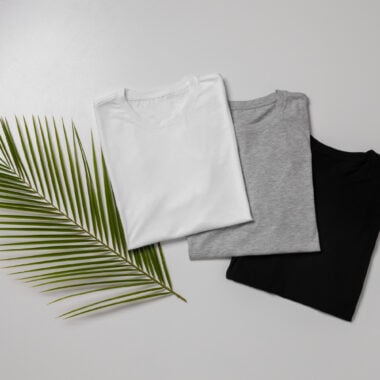What are Heat Transfers?
Heat transfers are a popular method for applying designs to clothing and other textiles. This process involves using heat and pressure to transfer images, graphics, or lettering onto a fabric surface. Heat transfers can be done at home with a heat press machine or a basic iron, making it accessible to anyone looking to customize their garments.
There are two main types of heat transfers: plastisol transfers and digital transfers. Plastisol transfers involve screen printing a design onto a special release paper, which is then transferred to the fabric using a heat press. Digital transfers, on the other hand, involve printing the design directly onto transfer paper using a printer, which is then heat pressed onto the fabric. Each method has its own benefits and considerations, depending on factors such as design complexity, quantity needed, and desired finish.
Types of Heat Transfer Methods
There are several methods of heat transfers commonly used in customizing clothing. One of the most popular methods is heat transfer vinyl (HTV), which involves cutting designs out of vinyl sheets and then using heat to transfer the design onto clothing. Another common method is sublimation, where heat and pressure are used to transfer dye onto polyester fabric, creating vibrant and durable designs. Additionally, heat press transfers involve using a heat press machine to apply pre-made designs onto clothing using heat and pressure. These methods offer a variety of options for customizing clothing with different materials and techniques.
Choosing the Right Fabric for Heat Transfers
When it comes to choosing the right fabric for heat transfers, it is essential to select materials that can withstand the heat and pressure involved in the transfer process. Fabrics like cotton, polyester, and blends of the two are generally good choices due to their ability to withstand the high temperatures required for successful transfers. These fabrics also provide a smooth surface for the transfer to adhere to, ensuring a clean and crisp final result.
Avoid using fabrics that are heat-sensitive or may shrink or distort under high heat, as this can lead to a failed transfer or a distorted design. Fabrics like silk, nylon, and delicate materials are not recommended for heat transfers as they may not be able to withstand the heat press or iron needed for the transfer to adhere properly. By choosing the right fabric for your heat transfers, you can ensure a successful and long-lasting custom design on your clothing.
Preparing Your Design for Transfer
First, ensure that your design is clean and free from any wrinkles or imperfections. A smooth surface will help the heat transfer adhere properly to the fabric. Next, consider the size of your design in relation to the garment it will be applied to. Make sure the dimensions are proportional and will look visually appealing once transferred.
Additionally, double-check that your design is compatible with the heat transfer process you will be using. Some intricate designs may not transfer well using certain methods, so it’s essential to choose the appropriate technique based on the complexity of your design. Always test a small sample transfer before applying it to your final garment to ensure the colors and details come out as intended.
Tools and Materials Needed for Heat Transfers
When it comes to heat transfers, having the right tools and materials is essential for achieving successful results. Some key items you will need include a heat press machine, transfer paper, heat transfer vinyl, a weeding tool, scissors, and a protective sheet. The heat press machine is crucial for applying heat and pressure to transfer the design onto the fabric accurately. Transfer paper is used to print the design before transferring it, while heat transfer vinyl is a durable material that can be cut into custom designs. A weeding tool comes in handy for removing excess vinyl or paper from the design, and scissors are useful for trimming the transfer materials to the desired size. Don’t forget to use a protective sheet to shield the fabric and the transfer from direct heat during the application process.
In addition to the basic tools mentioned above, having a Teflon sheet or parchment paper can further protect your fabric from heat damage during the transfer process. A ruler or measuring tape may also be helpful to ensure precise placement of the design on the clothing. Depending on the complexity of your design, you may need additional tools like an iron or a heat gun for certain heat transfer methods. It’s important to have a clean and flat work surface to set up your heat press machine and materials for a smooth transfer process. By having the right tools and materials ready before starting your project, you can ensure a seamless and professional-looking heat transfer onto your clothing.
How to Apply Heat Transfers to Clothing
When applying heat transfers to clothing, it is crucial to start with a clean and flat surface. Make sure to place the garment on a hard, heat-resistant surface to provide a stable base for the transfer process. Using a heat press or iron set to the appropriate temperature, preheat the fabric to remove any moisture and wrinkles.
Next, position the heat transfer design on the garment with the image facing down. Apply firm and even pressure using the heat press or iron for the recommended amount of time. Be careful not to move the transfer during the pressing process to ensure a smooth and even application. Once the transfer is set, carefully peel off the backing to reveal your customized design. Allow the garment to cool completely before wearing or washing to ensure the transfer adheres properly.
Tips for Successful Heat Transfers
To ensure successful heat transfers, it is essential to carefully follow the instructions provided with the transfer paper or vinyl. Make sure to set the heat press or iron to the correct temperature and pressure as per the manufacturer’s guidelines. Additionally, always pre-press the garment to remove any moisture and wrinkles before applying the heat transfer.
Another helpful tip is to avoid using too much pressure when applying the transfer as it can cause the design to distort or crack. Instead, apply even pressure across the entire surface of the design for a smooth and professional finish. Remember to peel off the transfer backing carefully and slowly once the design has cooled down to prevent any pulling or stretching of the design.
Troubleshooting Common Issues with Heat Transfers
One common issue when applying heat transfers to clothing is the transfer not adhering properly to the fabric. This can be caused by not applying enough pressure or heat during the transfer process. To troubleshoot this issue, make sure to press down firmly with a heat press machine or iron, and ensure that the temperature settings are correct for the fabric type.
Another issue that may arise is the transfer peeling off or cracking after washing. This can occur if the transfer was not applied properly, or if the garment was not washed and dried according to the transfer instructions. To address this issue, always follow the manufacturer’s guidelines for applying the transfer and caring for the garment post-transfer. Additionally, consider using a heat transfer that is specifically designed to withstand multiple washes for a longer-lasting result.
Caring for Clothing with Heat Transfers
When it comes to caring for clothing with heat transfers, it is crucial to follow specific guidelines to ensure the longevity of your designs. To maintain the quality of the transfer, always turn the garment inside out before washing. This simple step can protect the design from friction with other items during the washing cycle, helping to prevent peeling or fading.
Additionally, opt for cold water and a gentle cycle when laundering clothing with heat transfers. Hot water and harsh washing cycles can damage the transfer, causing it to crack or lose its vibrancy over time. After washing, it is best to air dry the garment or use a low heat setting in the dryer to further preserve the design. By incorporating these practices into your regular clothing care routine, you can enjoy your heat transfer designs for longer periods.
Inspiration for Customizing Clothing with Heat Transfers
Heat transfers offer endless possibilities for customizing clothing, providing a fun and creative way to make a statement with your wardrobe. From quirky designs to meaningful quotes, the options are vast and varied. One source of inspiration could be to explore your personal style and interests, allowing you to create unique pieces that truly reflect your personality.
Another idea for customizing clothing with heat transfers is to draw inspiration from current trends and fashion movements. Whether it’s incorporating popular patterns or experimenting with vibrant colors, staying up-to-date with what’s in vogue can give you fresh ideas for your heat transfer projects. By keeping an eye on the latest fashion trends, you can ensure that your customized clothing remains both stylish and relevant.




